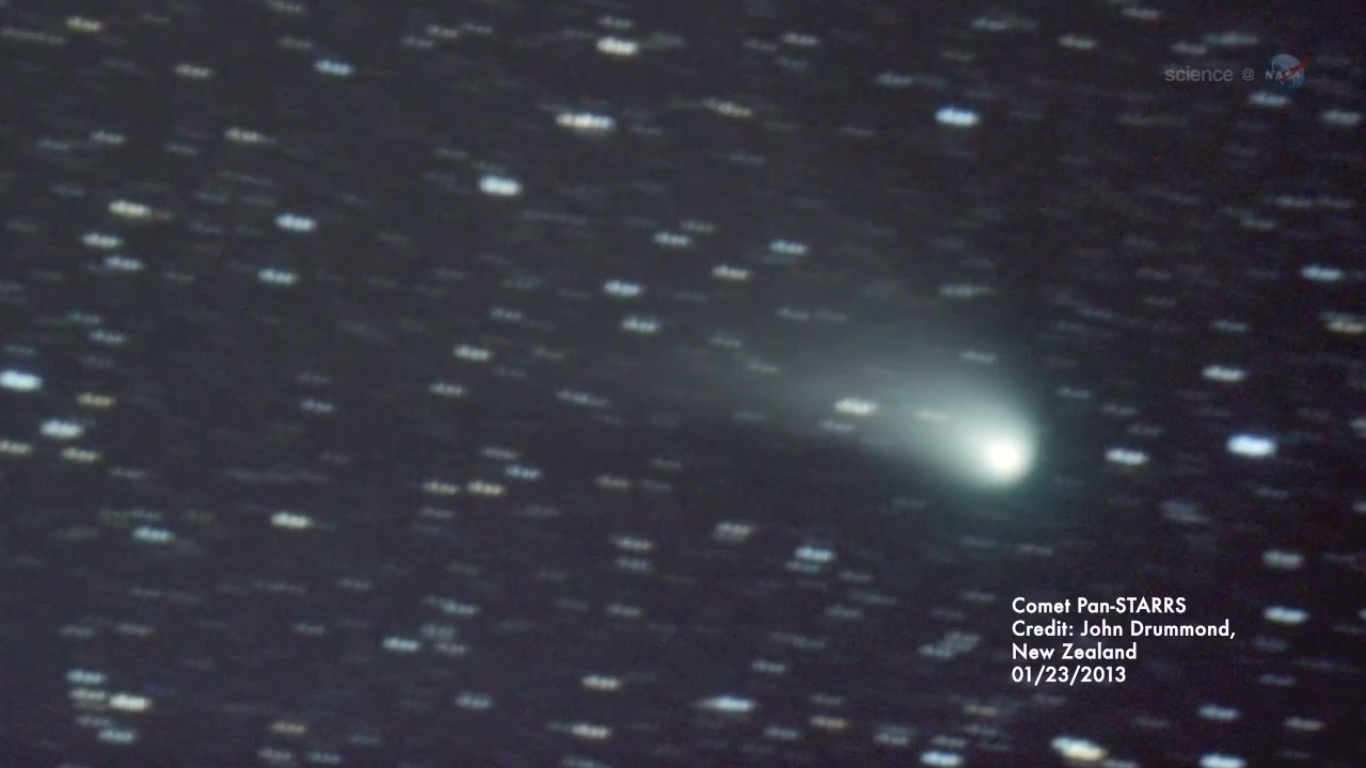Bright Comet May Be Visible to Naked Eye in March

A comet that shines as brightly as the stars of the Big Dipper could be heading our way in March, scientists say.
After a long journey from the outer reaches of the solar system, the Comet Pan-STARRS is expected to whiz by about 100 million miles from Earth, skimming the orbit of Mercury, early next month.
The comet could fail to put on a dazzling show if it falls apart under the intense heat and gravitational pull of its plunge toward the sun. But if it survives, Comet Pan-STARRS might send an amazing stream of gas and dust into the night sky, according to scientists with NASA and other observatories.
"Because of its small distance from the sun, Pan-STARRS should be very active, producing a lot of dust and therefore a nice dust tail," astronomer Matthew Knight of the Lowell Observatory in Arizona said in a statement. [Photos: Comet Pan-STARRS Could Light Up March Sky]
"However, it could still be difficult to see," Knight added. "From our point of view on Earth, the comet will be very close to the sun. This means that it is only observable in twilight when the sky is not fully dark."
The comet comes from the Oort Cloud, a shell of icy bodies thought to surround the outer solar system. Interactions with passing stars, molecular clouds and gravity from the galaxy sometimes sends these distant bodies falling inward toward the sun. Comets from the Oort Cloud are like pristine time capsules from the solar system's early life, packed with virgin icy material that has been untouched by the warmth and light of the sun.

Comet Pan-STARRS was discovered in June 2011 by the Panoramic Survey Telescope & Rapid Response System, or Pan-STARRS telescope, in Hawaii, which scans the sky for potentially dangerous asteroids and comets that could pose an impact threat to Earth. The cosmic snowball will make its nearest approach to Earth on March 5, when it will come be about 100 million miles (160 million kilometers) away. On March 10, the comet makes its closest approach to the sun.
Get the Space.com Newsletter
Breaking space news, the latest updates on rocket launches, skywatching events and more!
But astronomers say the best time to look for it might be at sunset March 12 and 13, when the comet will appear not far from the crescent moon.
"My guess is that the primary feature visible to the naked eye will be the gaseous coma around the head of the comet," Knight said. "The comet's tail will probably require binoculars or a small telescope."
Astronomers are also keeping an eye on another sun-grazing comet that could shine as bright as the moon and may even be visible in broad daylight later this year. If it delivers on its promise, the Comet ISON is expected to peak in late November.
"Two bright comets in one year is a rare treat," Karl Battams of the Naval Research Lab said in a statement. "This could be good."
Editor's note: If you snap an amazing photo of Comet Pan-STARRS in the night sky, or any other celestial object, and you'd like to share for a possible story or image gallery, please send images and comments, including location information, to managing editor Tariq Malik at spacephotos@space.com.
Follow SPACE.com on Twitter @Spacedotcom. We're also on Facebook and Google+.
Join our Space Forums to keep talking space on the latest missions, night sky and more! And if you have a news tip, correction or comment, let us know at: community@space.com.

Space.com is the premier source of space exploration, innovation and astronomy news, chronicling (and celebrating) humanity's ongoing expansion across the final frontier. Originally founded in 1999, Space.com is, and always has been, the passion of writers and editors who are space fans and also trained journalists. Our current news team consists of Editor-in-Chief Tariq Malik; Editor Hanneke Weitering, Senior Space Writer Mike Wall; Senior Writer Meghan Bartels; Senior Writer Chelsea Gohd, Senior Writer Tereza Pultarova and Staff Writer Alexander Cox, focusing on e-commerce. Senior Producer Steve Spaleta oversees our space videos, with Diana Whitcroft as our Social Media Editor.









